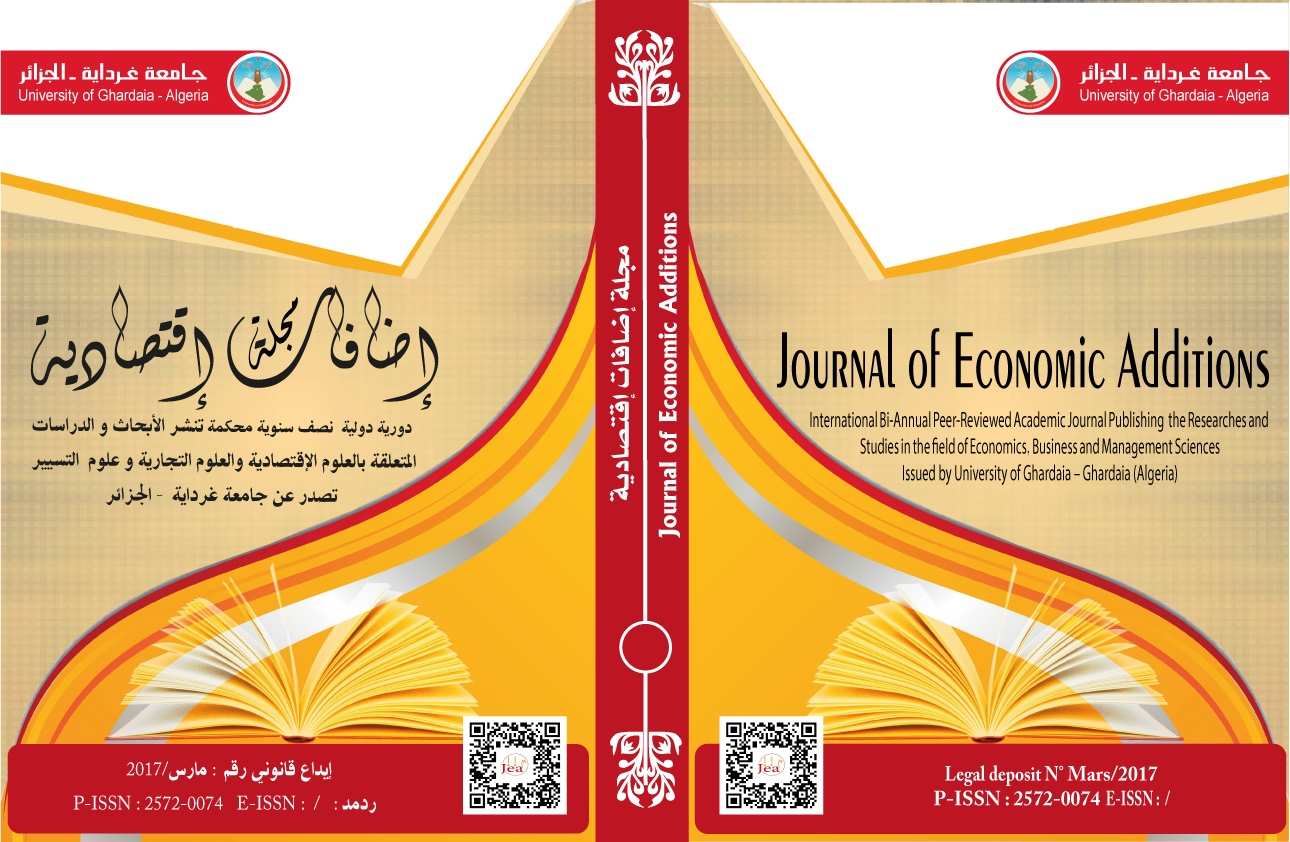SMEs: between the application of governance mechanisms and the problem of administrative corruption -Field Study
Abstract
This study aims to highlight the importance of SMEs in creating and developing a modern and dynamic knowledge-based economy, because of their ability to promote entrepreneurship and entrepreneurial skills and because of their ability to be flexible and adapt quickly to the changing market, and to Creating new jobs, making a significant contribution to innovation and supporting regional development and social cohesion, as well as making a significant contribution to GDP growth and creating new jobs, and addressing the problem of administrative corruption that hinders the development and development of such sensitive institutions, has also been addressed. The study found that there is an inverse relationship between organizational governance mechanisms and corruption, which means that the more governance mechanisms are applied within SMEs, the less corruption there is.
Keywords: SMEs, administrative corruption, corporate governance, Balanced strategic performance.
Jel Classification Codes: G 39, C12.
References
Ades, A., & Di Tella, R. (1996). The causes and consequences of corruption: A review of recent empirical contributions. IDS Bulletin, 27(2),pp. 6-11.
De Jong, G., Tu, P. A., & Van Ees, H. (2012). Which entrepreneurs bribe and what do they get from it? Exploratory evidence from Vietnam. Entrepreneurship Theory and Practice, 36(2),pp. 323-345.
Faruq, H., Webb, M., & Yi, D. (2013). “Corruption, bureaucracy and firm productivity in Africa”. Review of Development Economics, 17(1),pp. 117-129.
Fisman, R., & Svensson, J. (2007). Are corruption and taxation really harmful to growth? Firm level evidence. Journal of Development Economics, 83(1),pp. 63-75.
Hoskisson, R. E., Eden, L., Lau, C. M., & Wright, M. (2000). Strategy in emerging economies. Academy of management journal, 43(3),pp. 249-267.
Hung, H. (2008). Normalized collective corruption in a transitional economy: Small treasuries in large Chinese enterprises. Journal of Business Ethics, 79(1-2),pp. 69-83.
Jain, A. (2001). Corruption: A review. Journal of Economic Surveys, 15(1),pp. 71-121.
Karadag, H. , 2016, The Role of SMEs and Entrepreneurship on Economic Growth in Emerging Economies within the Post-Crisis Era: an Analysis from Turkey, Journal of Small Business and Entrepreneurship Development, Vol. 4, No. 1, pp. 22-31.
Méon, P.-G., & Weill, L. (2010). “Is corruption an efficient grease?”. World development, 38(3),pp. 244-259.
National Credit Regulator (NCR), Literature Review on Small and Medium Enterprises’ Access to Credit and Support in South Africa, December 2011, pp. 1-92.
Neagu, Cibela, 2016, The importance and role of small and medium-size businesses, Theoretical and Applied Economics, Volume XXIII (2016), No. 3(608), Autumn, pp. 331-338.
North, D. C. (1990). Institutions, institutional change and economic performance: Cambridge university press.
Rose-Ackerman, S. (1997). Role of the World Bank in Controlling Corruption. Law & Pol'y Int'l Bus, 29(93).
Svensson, J. (2005). “Eight questions about corruption”. The Journal of Economic Perspectives, 19(3), pp.19-42.
Vial, V., & Hanoteau, J. (2010). Corruption, manufacturing plant growth, and the Asian paradox: Indonesian evidence. World Development, 38(5),pp. 693-705.




